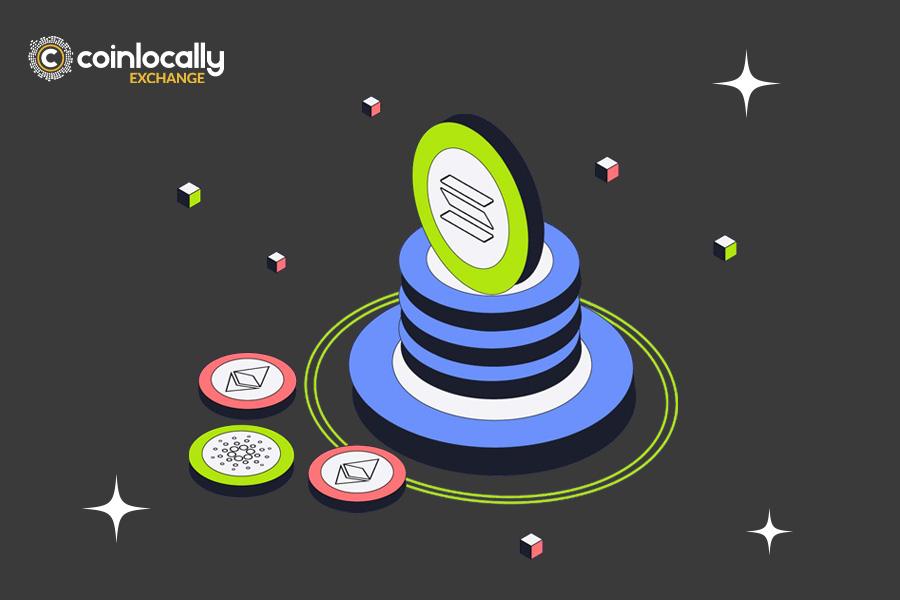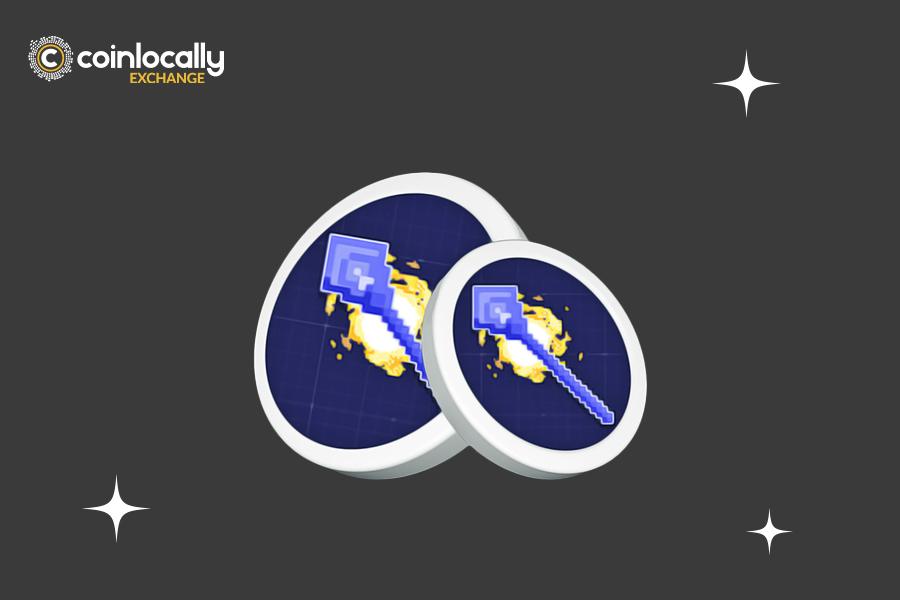Scalability is one of the most significant issues of blockchain technology. However, some platforms have cracked the code and provided the most scalable blockchains with highly efficient block times and transaction speeds. Read all about the 10 most scalable blockchains in the current crypto market.
Table of Contents
What Is Blockchain Scalability?
One of the main functions of blockchain networks is handling transactions and user activity, which is called blockchain scalability.
The better a blockchain’s scalability, the more and faster transactions it can process, the larger data packs it can handle, and the better it can maintain decentralization.
Blockchain scalability affects the network’s performance, security, and general functionality, but some reasons add to its importance. Let’s examine them.
Why Is Scalability Important?
Blockchain scalability is essential because as networks grow and gain popularity, more users will be attracted to them, and more transactions will be conducted that need to be processed.
If the blockchain is good at scalability, it can process a larger number of transactions more quickly and efficiently.
Also, scalability is essential because it empowers the network to process increasing amounts of work or users, i.e., to maintain or enhance performance.
It is a critical factor since it ensures the functionality and long-term success of the network as demand for the blockchain network increases over time.
Although scalability is integral to the blockchain, many blockchain networks face scalability issues. How do they face these issues? Follow me to the next section to find out.
What Is The Scalability Problem In Blockchain?
As mentioned above, blockchain networks improve over time to attract more users and execute more transactions. This is when the problem arises, as some blockchain networks don’t have enough capacity to handle the increased number of transactions/ users.
This problem can decrease transaction speed and time, but increase transaction fees. Many platforms are emerging with a single priority: solutions for the blockchain scalability issue.
The following sections will introduce some of the most scalable blockchains. Keep scrolling!
The 10 Most Scalable Blockchains
So far, we’ve learned that scalability is a key element of a blockchain network. The following list introduces the ten most scalable blockchains in the crypto market.
- Ethereum 2.0
- Solana
- Binance Smart Chain
- Polygon (formerly known as Matic Network)
- Avalanche
- Elrond
- Cardano
- Algorand
- Polkadot
- Chainlink
Let’s learn more about these ten most scalable blockchains and compare them to see which ones are even more scalable.
Ethereum 2.0
Although the above list is not in order, Ethereum 2.0 is number one among the ten most scalable blockchains.
Ethereum 2.0, aka Serenity, is the upgraded version of the Ethereum blockchain, developed to address Ethereum’s scalability issues.
Using a Proof-of-Stake (PoS) consensus mechanism adds to the efficiency and speed of block validation in Ethereum 2.0.
Also, sharding enables Ethereum 2.0 to process multiple transactions in parallel.
Thanks to such advancements, Ethereum 2.0 expands its processing capacity and decreases latency, which leads to better scalability.
Main Features
Ethereum 2.0 introduces several key features that address the limitations of the previous version. These are:
- Increased Scalability: Before Ethereum 2.0, the network’s capacity was constrained and could handle only a limited number of transactions per second.
Ethereum 2.0 introduces sharding, which divides the network into 64 parallel chains. This allows for faster transaction validation and substantially increases overall transaction throughput. - Better Sustainability: Ethereum’s transition from a Proof of Work (PoW) consensus mechanism to Proof of Stake (PoS) has dramatically reduced energy consumption.
PoS relies on validators who stake their ETH to secure the network, so there is no need for energy-intensive mining. This shift has made Ethereum a much more environmentally friendly platform. - Staking: Users can stake their ETH to earn rewards for contributing to the network’s security. Validators with larger stakes are more likely to be selected to validate transactions and receive rewards.
This system democratizes participation in Ethereum and allows anyone with sufficient ETH to become a validator.
Solana
A famous Ethereum killer – Solana – is one of the blockchains developed to solve scalability issues in decentralized platforms.
Using a Proof-of-History consensus mechanism, Solana developed a quick and predictable method to order transactions.
Also, using parallel processing, Solana can process multiple transactions simultaneously and reach a significant transaction throughput of up to 65,000 Transactions Per Second (TPS).
Owing to these features and innovations, Solana is one of the most scalable blockchain networks and is home to DApps with fast and low-cost transactions.
Main Features
The following are the significant features of Solana that make it a promising platform.
- Scalability: Solana’s unique Proof of History (PoH) consensus mechanism combined with Proof of Stake (PoS) enables it to process thousands of transactions per second.
- Low Transaction Fees: Solana’s efficient architecture results in lower transaction costs than other blockchains like Ethereum.
- Fast Transaction Speeds: Solana’s architecture allows rapid transaction confirmation times, making it well-suited for time-sensitive applications.
- Ecosystem Growth: Solana has a growing community of developers, projects, and users supported by initiatives such as the Solana Foundation grants.
Most Scalable Blockchains: Binance Smart Chain
Binance Smart Chain (BSC) was created by Binance Exchange to improve the speed and fees of developing DApps.
BSC’s version of the PoS algorithm is called the Delegated-Proof-of-Stake (DPoS), which provides better block validation speed and high transaction throughput.
Also, using cross-chain technology, BSC transfers assets among various blockchain networks.
All these features result in Binance Smart Chain’s good scalability, making it a suitable platform for developing fast and cheap DApps.
Main Features
These are some of the main features of BSC:
- Independent Blockchain: BSC is a separate blockchain from Binance Chain, meaning it can operate independently even if Binance Chain ceases operations.
- Ethereum Compatibility: Since BSC supports Ethereum-compatible smart contracts, developers can easily build or migrate decentralized applications (dApps) and other tools onto the BSC network.
- Staking and Governance: BSC uses a proof-of-staked-authority consensus mechanism that enables users to stake Binance Coin (BNB) to contribute to network security and participate in community governance.
- Native Interoperability: BSC can seamlessly communicate with Binance Chain, allowing users to easily move cryptocurrencies between the two networks.
Most Scalable Blockchains: Polygon
Polygon (Matic) is a Layer-2 scaling solution developed to conquer scalability and network congestion problems. Using its version of the PoS algorithm and side chains, Polygon reduces the transaction load from the Ethereum network.
These features of Polygon result in low-cost and fast transactions while keeping the Ethereum main chain secure.
Thanks to all this, Polygon enjoys high scalability and improved performance and is a suitable platform for DApps.
Main Features
Polygon offers several essential features, such as:
- Interoperability: Polygon allows for seamless asset transfers between Ethereum and other blockchains.
- Developer-Friendliness: Polygon provides a range of tools and resources to simplify the development of decentralized applications (dApps) on its platform.
- Community-Driven: Polygon benefits from a vibrant community of developers, users, and supporters who actively contribute to its growth and development.
Most Scalable Blockchains: Avalanche
Next on the list is Alavanche, a DeFi platform developed to improve transaction speed and efficiency while supporting various DApps.
Avalanche’s consensus mechanism, Avalanche-X, enables the parallel processing of transactions and improves transaction throughput.
Also, as a multi-chain, Avalanche streamlines the development of customized blockchain networks for particular use cases.
Avalanche is a scalable network with fast and efficient transactions for these features.
Main Features
As a blockchain platform, Avalanche offers several unique features.
- Consensus Mechanism: Unlike traditional proof-of-work or proof-of-stake models, Avalanche uses a probabilistic approach.
Validators sample a small subset of other validators to reach a consensus, and this process is repeated multiple times to ensure finality. This mechanism enables Avalanche to achieve high transaction speeds and sub-second finality. - Subnets are dynamic subsets of validators that work together to achieve consensus on the state of specific blockchains. Subnets allow developers to create customized blockchains within the Avalanche network.
- Security and Decentralization: Avalanche’s consensus protocol is designed to resist attacks.
Moreover, Avalanche distributes its validating power across a wide range of participants, which makes it more decentralized than networks that concentrate power among a few validators or miners.
Most Scalable Blockchains: Elrond
Elrond is a next-generation blockchain platform developed to increase transaction speed and efficiency. Secure Proof of Stake (SPoS) allows Elrond to validate blocks quickly and increase throughput.
Also, Elrond is one of the networks using sharding technology, which allows it to execute multiple transactions simultaneously and improves scalability.
Main Features
Elrond has several essential features, including:
- High-Speed Transactions: Elrond’s sharding technology enables it to process many transactions quickly.
- Enhanced security: The platform uses secure proof of stake (SPoS), a consensus mechanism designed to ensure the network’s security and integrity and support a large user base.
- User-Friendliness: Elrond offers developer tools and features to simplify the creation and deployment of decentralized applications.
Cardano
Cardano was developed to help decentralize by enabling developers to create various DApps using smart contracts.
Moreover, Cardano uses a special consensus algorithm, Ouroboros, which increases scalability, security, and sustainability. Cardano’s version of PoS lets it validate blocks efficiently and consume less energy.
Its multi-layer architecture allows Cardano to process multiple transactions, resulting in high scalability.
Main Features
Cardano has quite a few unique features that include:
- Decentralized Network: Cardano’s blockchain is highly decentralized and built entirely on scientific and mathematical principles. This ensures that control and decision-making power are distributed among its participants rather than concentrated in the hands of a few. Innovative Contract Capability: Cardano’s blockchain supports the creation of smart contracts, self-executing contracts with terms directly written into code. This enables the development of decentralized applications (dApps) across various industries.
- Instant Transactions: Cardano offers fast and efficient transactions with minimal fees.
Most Scalable Blockchains: Algorand
Algorand prioritizes transaction speed and security and uses a Pure Proof-of-Stake (PPoS) consensus mechanism, enabling it to validate blocks efficiently.
Also, Algorand uses a cryptographic sortition protocol to randomly select block proposers to enhance security. The sharding technology lets this network process many transactions, improving scalability.
Main Features
Let’s see what features of Algorand make it stand out.
- User-Friendly Programming: Algorand employs programming languages like TEAL, Clarity, Reach, and Python, which are more developer-friendly than Solidity, used in Ethereum. These languages offer better code readability and reduce the risk of bugs.
- High Transaction Speed: Algorand has fast transaction speeds with block proposal times of 0.5 seconds and block finalization times of 2.5-4.5 seconds.
- Scalability: The Proof of Stake mechanism enables Algorand to handle a high volume of transactions with a potential throughput of 45,000 TPS.
- Forkless Nature: Unlike other blockchains that may experience forks, Algorand avoids this issue. This is quite important for NFTs and different digital assets, given that it prevents the creation of duplicates and potential disputes over ownership.
- Developer-Friendly Ecosystem: Algorand provides a supportive environment for developers, including tools, frameworks, and opportunities to contribute to the platform’s growth.
Most Scalable Blockchains: Polkadot
Polkadot is another multi-chain protocol focusing on blockchain interoperability and supporting DApps.
Its version of the PoS algorithm is called Nominated-Proof-of-Stake (NPoS), which improves block validation and throughput.
Since Polkadot is a multi-chain network, it can create multiple parallel chains to enhance blockchain scalability.
Main Features
Polkadot offers several valuable features. These include:
- Scalability: Polkadot’s sharded architecture allows it to process many transactions simultaneously on different chains. Thus, there will be no bottlenecks that occur in traditional single-chain networks.
- Interoperability: Polkadot offers unique interfaces enabling communication and data transfer between blockchains. This is necessary for activating smart contracts with data from external sources, such as exchanges or companies.
- Architecture: Polkadot provides various ways to build applications, including Smart contracts (for simple applications), Parachains (for complex runtime logic that is too expensive for smart contracts), and Parathreads (which are similar to parachains but less expensive to secure).
Chainlink
A Chainlink is a decentralized Oracle network that provides safe and trustworthy data to smart contracts on many blockchain platforms.
Aiming to bridge the gap between smart contracts and real-world data, Chainlink streamlines the development of DApps by accessing off-chain data.
Parallel processing of multiple requests allows Chainlink to provide better scalability.
Main Features
Chainlink has several essential features that make it valuable. These features are:
- Off-Chain Architecture: Chainlink operates off-chain, connecting nodes to data sources through APIs, allowing it to access a wide range of external data.
- High-Quality Data Feeds: Chainlink offers reliable and accurate data feeds, such as cryptocurrency price feeds. These feeds are essential for decentralized finance (DeFi) applications.
- Verifiable Randomness: Chainlink’s Verifiable Random Function (VRF) provides a provably fair and tamper-resistant source of randomness for blockchain applications like gaming, lotteries, and NFT minting.
- Proof of Reserve: This feature verifies off-chain reserves backing on-chain assets to improve transparency and trust in tokenized and wrapped tokens.
- Cross-Chain Interoperability: Chainlink’s Cross-Chain Interoperability Protocol (CCIP) facilitates data and value transfer between blockchains.
A Comparison of The 10 Most Scalable Blockchains
The chart compares the ten most scalable blockchains to help us choose the best!
Just remember that scalability is not the only factor to consider when choosing a blockchain, and technological advances and solutions innovations can change these rankings.
You may ask which of the blockchains listed above is more scalable. This is a difficult question to answer as various factors determine the scalability power of a blockchain network, such as the transaction volume, the type of apps being run, etc.
However, Solana, Binance Smart Chain, Polygon, Avalanche, and Elrond are currently the most scalable ones.
Summary of Most Scalable Blockchains
That’s about the ten most scalable blockchains, which help crypto enthusiasts go beyond physical world boundaries and even their imaginations.
FAQ of Most Scalable Blockchains
The following subsections answer the most frequently asked questions about the most scalable blockchains.
What Is The Fastest, Most Scalable Blockchain?
Research shows TechPay Coin’s blockchain records 300,000 TPS (Transactions per Second) with a 15-second transaction finality.
What Is The Most Efficient Blockchain?
Currently, Avalanche (AVAX) is considered one of the most scalable blockchains in the crypto market.
What Is The Fastest Blockchain Technology?
Solana is one of the fastest blockchains, with 3,400 transactions per second (TPS).




